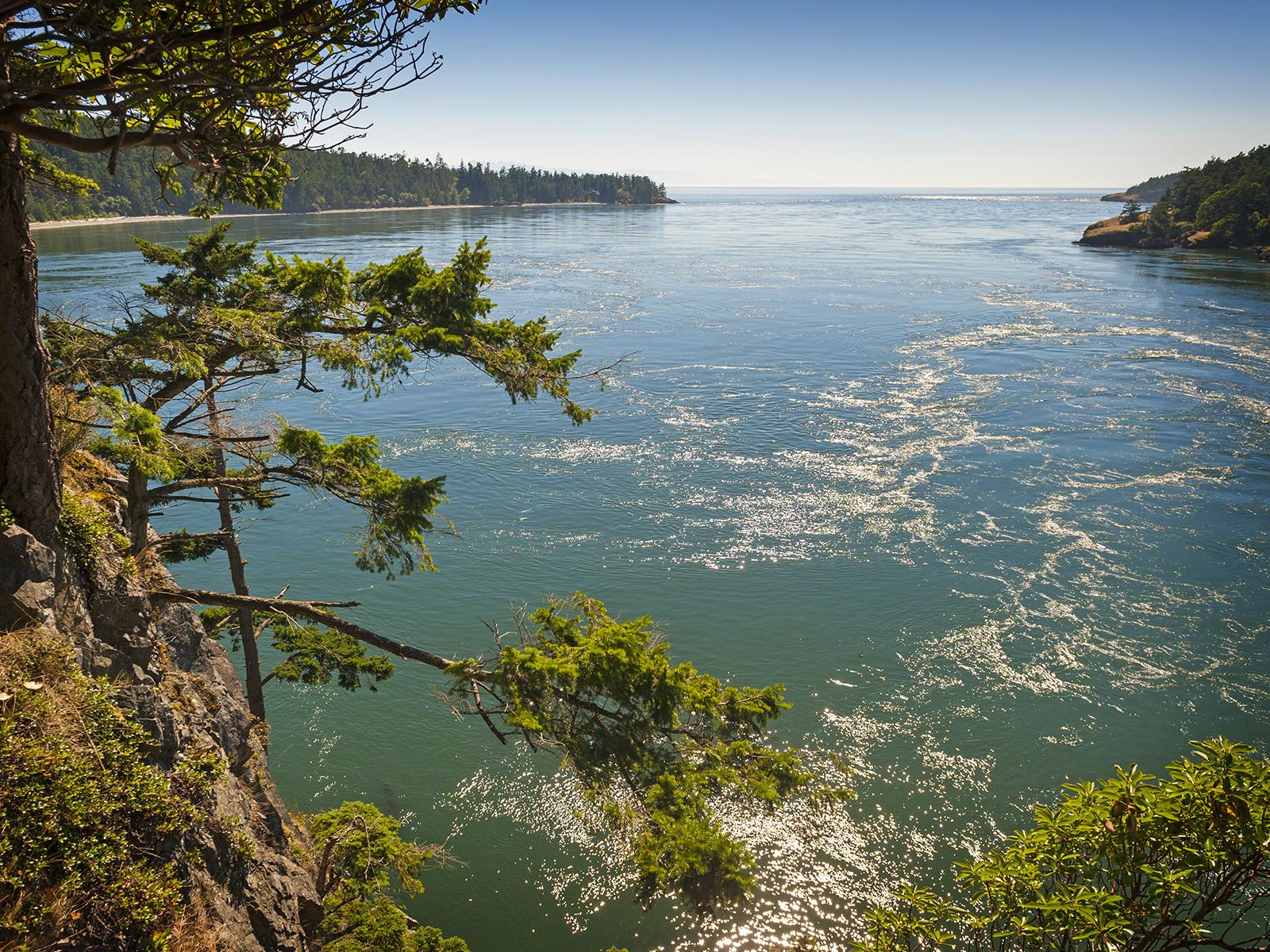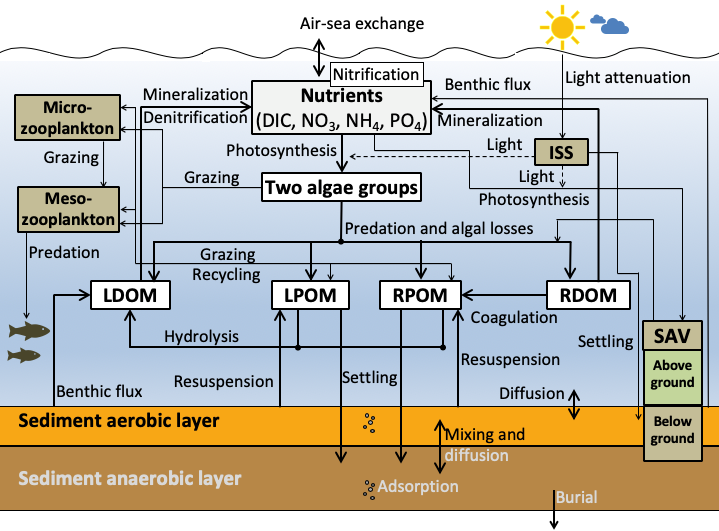Public Release of PNNL’s Ocean Biogeochemical Modeling Software
Open-source modeling code helps predict impacts from environmental challenges

This view of the Salish Sea is from Deception Pass State Park near Whidbey Island in the northwest corner of Washington state.
(Photo by Edmund Lowe Photography | Shutterstock.com)
For marine and coastal researchers trying to predict water chemistry, nutrient cycles, and the impacts of environmental challenges, the availability of robust and mature modeling tools is of the utmost importance. This is the spirit behind Pacific Northwest National Laboratory’s (PNNL’s) recent release of its ocean biogeochemical modeling software, which simulates water quality conditions including carbon, nutrient, phytoplankton, and zooplankton.
PNNL’s Salish Sea Model research team is making the software open source to foster collaborative research and development using state-of the-art comprehensive aquatic fate and transport models. The Integrated Compartment Model (ICM) software was developed by PNNL to operate on the Finite Volume Community Ocean Model (FVCOM) framework and is called FVCOM-ICM (version 4.0). It can now be downloaded using this link.
“Our focus is to support researchers from various state and federal agencies engaged in efforts related to ecosystem management and restoration,” says Tarang Khangaonkar, program manager for coastal ocean modeling, based at PNNL-Seattle. “When we consider the progress in predictive coastal ocean modeling, growth in computational power, and efforts being made by communities to combat and reverse ecological impacts, the lack of access to established regional models and associated analytical software should not be an impediment or a reason to delay action—that is the foundation of this software release.”
Open access to model code, and example setup, solution files

The FVCOM-ICM software was developed by PNNL as part of an effort to establish a robust unstructured biogeochemical model for Puget Sound, Georgia Basin, and the Strait of Juan de Fuca. Using the Salish Sea as its test bed, PNNL continues to grow its capabilities with the addition of new modules and features. For example, PNNL is developing a toxics fate and transport module (FVCOM-ICM/toxi) to decipher persistent PCB contamination in the Salish Sea marine food web.
In 2020, PNNL’s Salish Sea Model supported researchers as they located toxic contaminant hotspots in Puget Sound—detecting minute amounts of toxins like pharmaceuticals and chemotherapy drugs—tied to localized lack of water circulation and cumulative effects from multiple sources. The Salish Sea Model has also been used to predict microplastic transport and for restoration planning for salmon.
Prior to public release of the software, to extend these capabilities to other researchers, team members made application results and solution files available upon request. Now, external researchers have open access to the code for use in similar analysis in regions beyond the Pacific Northwest. “It is our hope that by releasing the code publicly, the model may gain wider use; and through experience, feedback, and collaboration, ultimately lead to advancement of the science of ocean modeling and prediction,” said Khangaonkar.

The baseline biogeochemical model includes 24 state variables: temperature, salinity, two species of phytoplankton (diatoms P1 and dinoflagellates P2), labile and refractory dissolved organic carbon and particulate organic carbon, NH4, nitrate (NO2+NO3), labile and refractory dissolved organic nitrogen and particulate organic nitrogen, PO4, labile and refractory dissolved organic phosphorous, dissolved oxygen, dissolved inorganic carbon (DIC), and total alkalinity (TA).
The model includes a sediment diagenesis module that allows directly coupled interaction between the water column and sediments through the processes of organic sediment settling and burial and remineralization and carbonate chemistry with DIC, TA, pCO2, and pH.
The FVCOM-ICM code was developed in consultation with the University of Massachusetts, Dartmouth, and the U.S. Army Corps of Engineers (USACE). It conducts biogeochemical simulations based on USACE’s CE-QUAL-ICM kinetics over the FVCOM hydrodynamic framework. It has been through numerous phases of testing since 2012. The 2021 copyright is held by Battelle Memorial Institute.
In addition to Khangaonkar, the research team specific to this software release included PNNL coastal modeling scientists Lakshitha Premathilake and Adi Nugraha. Khangaonkar and Premathilake hold joint appointments with the Salish Sea Modeling Center, part of the University of Washington Tacoma’s Center for Urban Waters—Khangaonkar as the center’s director. Nugraha now works at the Salish Sea Modeling Center. This work was conducted through funding and support from the Environmental Protection Agency through an interagency agreement with PNNL, in collaboration with the Washington State Department of Ecology.
PNNL Contacts:
Tarang Khangaonkar, Salish Sea Model, tarang.khangaonkar@pnnl.gov
Lara Aston, Environmental Effects of Energy Development, lara.aston@pnnl.gov
Published: November 30, 2021